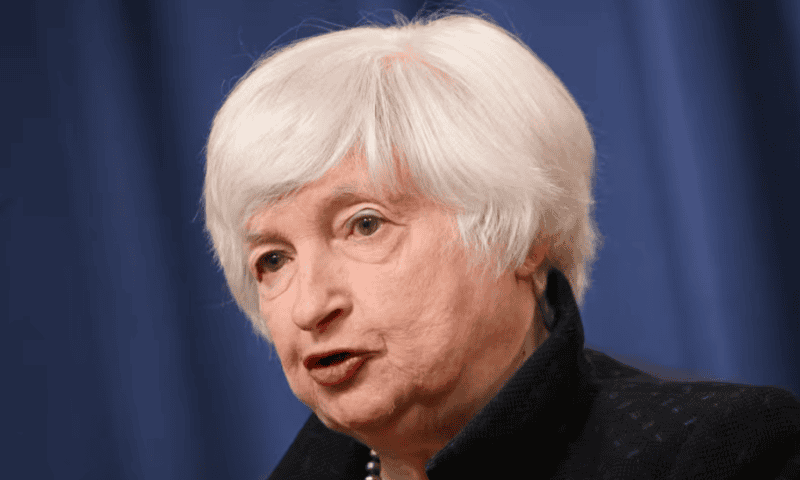‘Interlinkages’ between commercial real estate debt holders could trigger a crisis, FSOC warns
Few industries have been affected by the COVID pandemic and its aftermath like commercial real estate.
Inflation, rising interest rates and the persistence of work-from-home arrangements have battered the sector, and U.S. financial regulators are keeping a close eye on the industry, given that commercial real estate loans are widely held by banks, insurance companies and other financial institutions.
The Financial Stability Oversight Council issued its 2023 annual report Thursday, and listed commercial real estate as the first in its list of financial risks to the U.S. economy.
FSOC was created in the wake of the 2008 financial crisis to identify potential risks to the financial stability of the United States and to promote market discipline. It comprises the heads of the major U.S. financial regulators and is chaired by Treasury Secretary Janet Yellen.
The report noted that commercial real estate loans totaled nearly $6 trillion in the second quarter of 2023, roughly half of which were owned by U.S. banks, and that “a substantial volume” of these loans are set to mature in the next few years.
Regulators are concerned that a vicious cycle may take hold, whereby elevated office vacancy rates leave borrowers unable to finance their debt, which in turn leads to distressed sales that impact the value of neighboring properties. The lack of traffic in some business districts also has the compounding effect of reducing demand for restaurants and retail locations in business districts.
Given that commercial real estate loans are the largest loan category for nearly half of U.S. banks, and that one-quarter have commercial real estate loan portfolios that are large relative to their capital reserves, bank watchdogs also fear that trouble in the sector could lead banks to lend less to all sectors of the economy.
“Interlinkages between financial intermediaries that are active in the commercial real estate market, including banks, insurance companies, REITs, and private lenders, could amplify financial stress in the sector,” the report reads.
Vacancy rates are now also rising in large, multifamily apartment buildings and property values in that sector have fallen 4% from pre-pandemic levels and 16% from the year prior, the report said.
There’s more pain to come in this sector as well, particularly in “U.S. sunbelt markets” in Texas, Florida and Arizona, where new properties continue to be built at a rapid clip even as rents have started to grow more slowly or even decline.
A financial stability report issued by the Federal Reserve in May also named commercial real estate as a significant risk to the economy and banking system, and research published last month by the St. Louis Fed showed that leverage in the sector is rising as prices decline and few deals have been restructured.
The study showed that smaller banks tend to have greater exposure to commercial real estate debt, which could signal that the struggles in the regional bank sector KRE, evident earlier this year following the failure of Silicon Valley Bank and Signature Bank of New York, could persist.
Meanwhile, financial regulators are now keenly aware following the SVB bailout that that troubles at smaller banks can pose broader risks to financial stability.
“Risks from a potential downturn in the [commercial real estate sector] are concentrated in the smaller banks and no in the large bank holding companies that are commonly perceived to be too big to fail,” the St. Louis Fed researchers wrote.
“Still as the 2007-2008 financial crisis has shown,” they added, “large waves of failures among even small institutions can generate significant disruptions in financial markets and later spread to the real economy.”

